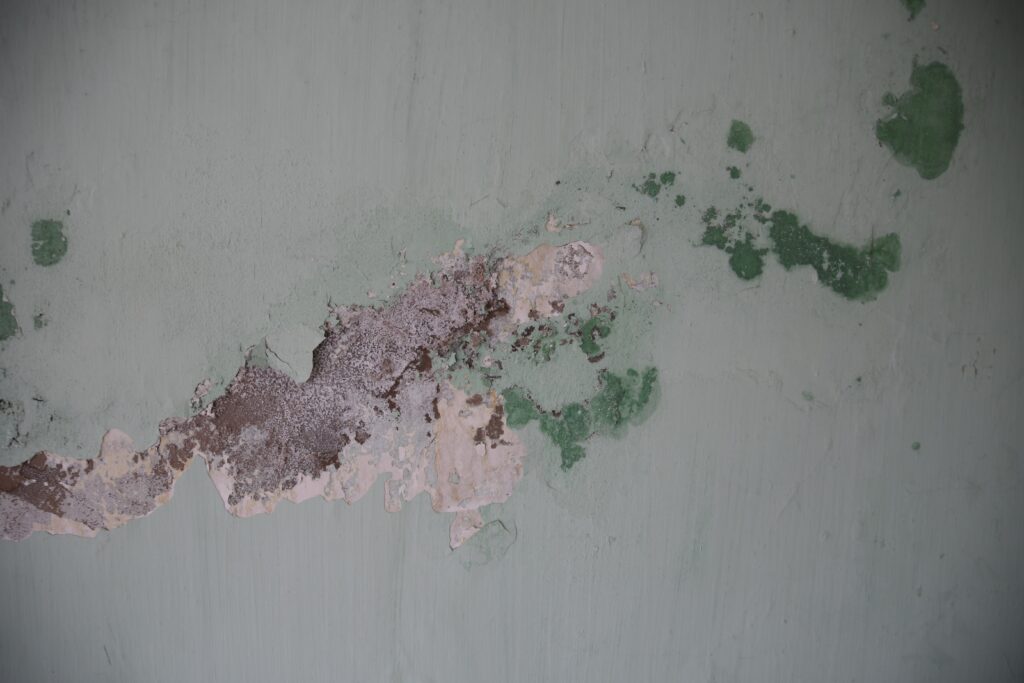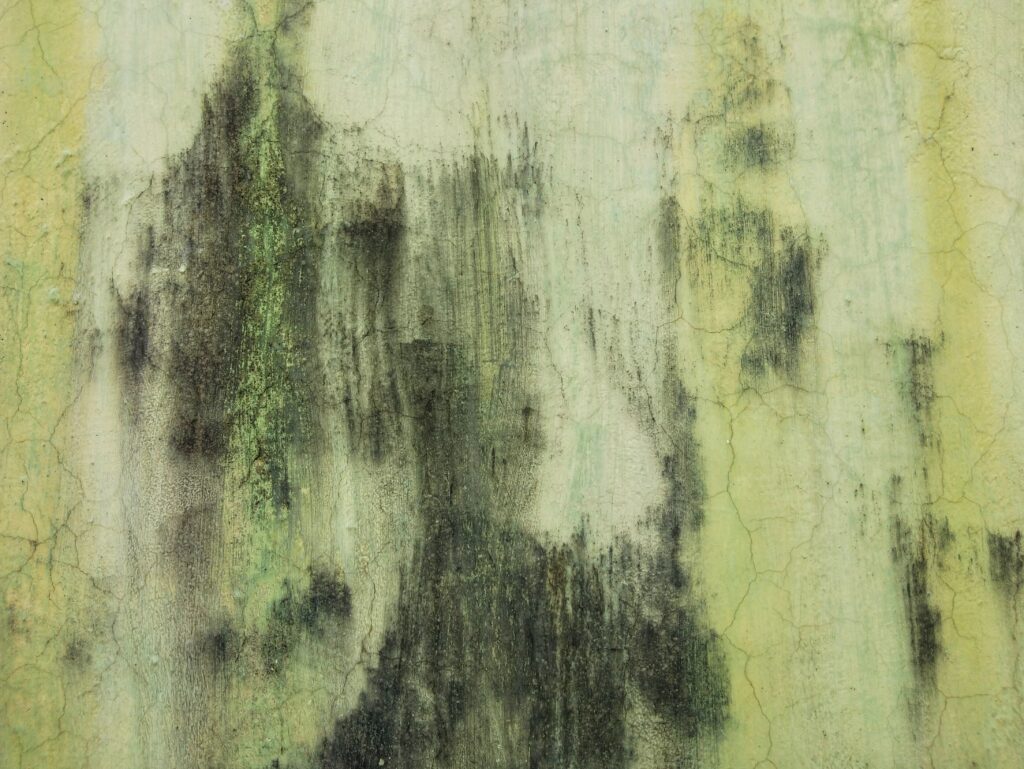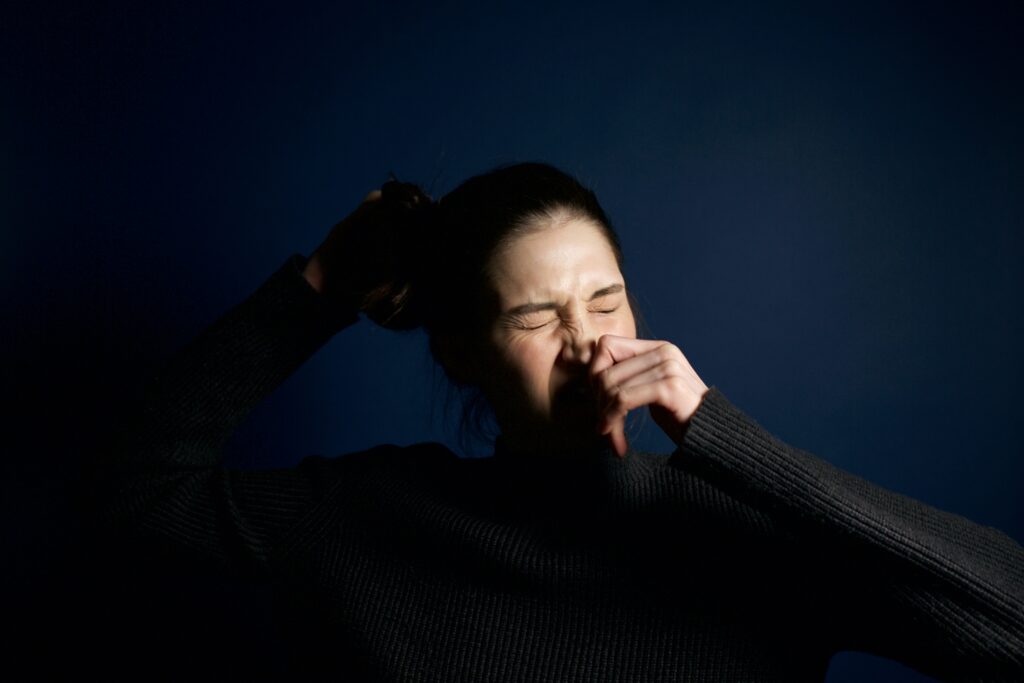Have you ever seen those black spots on the walls or ceilings of your home and wondered what they were? Are they mould or mildew? What’s the difference, anyway? Let’s look at how they compare. Stay tuned!

Is it mould or mildew?
Mould and mildew are often used interchangeably, but they are two distinct types of fungi. Both mould and mildew can cause health and other problems so, it is important to recognise them.
Mould is a type of fungi that grows in filaments, and it is often used in the production of food and medicines, and can also have harmful effects. Mould is usually black, green, or white, and it can often be found growing in damp or humid environments.
Mildew, on the other hand, is a type of fungi that forms a powdery film on surfaces.
It is usually white or yellow and often forms on clothing or other fabrics that have been stored in damp conditions.
The similarities between mould and mildew
Mould and mildew are both types of fungi that can grow on surfaces in damp, humid conditions. They are often found in bathrooms and kitchens, where they can cause damage to paintwork and other surfaces. Both can appear similar in colour and have a fuzzy or hairy texture. In form and behaviour, they are both composed of tiny spores that can be released into the air, where they can be breathed in. In some cases, exposure to mould and/or mildew spores can cause allergic reactions, such as hay fever or asthma.

While superficial mould and mildew can be removed with household cleaners they can both quickly return if the conditions that allow them to grow are not actively addressed.
The differences between mould and mildew
Mould is usually green or black, and it can often be seen growing on food or in areas with high humidity levels, e.g. bathrooms and kitchens. Mildew, on the other hand, is usually white or yellow and is often found on fabrics or leather. Mould is also typically more harmful to humans than mildew, as it can cause significant respiratory problems.
As both need moisture to grow, so they are often found on their own or together in damp areas like basements or bathrooms. To prevent mould and mildew from growing, it’s important to keep these areas well-ventilated and free of water leaks.
Which one is worse?
Mould and mildew are both types of fungi that can grow on damp surfaces. Mould can cause health problems, including respiratory problems, headaches, and skin rashes. It is more likely to cause serious health problems than mildew because it produces toxins that can harm the respiratory system. Mould tends also to be more difficult to remove than mildew and it can become well-established.
But, mildew can also cause health issues, including asthma and allergies. It is not typically harmful to human health. However, it can damage plant life and eating mouldy food can cause nausea and vomiting. Overall, mould is more dangerous to human health than mildew.
They can be a problem in any home. While both are unsightly, mould is generally considered to be more harmful to human health.

Mould releases spores into the air, which can cause ill health for some people. In addition, mould can also cause damage to the structure of your home.
You accurately telling the difference between the two does not really matter!!
**In practice, if there is one of them present the other is probably not far behind or hidden somewhere nearby! The occurrence of either is a warning sign of developing or potentially more serious issues.
So the fact that it may look and act like mildew, often thought of as just a nuisance and lesser problem is not a reason to let your guard down.
Getting rid of mould and or mildew
If you suspect that you have a mould or mildew problem, there are a few things you can do to get rid of it.
- Try to identify the source of the moisture. Mould will not grow without a water source, so addressing the root cause of the problem is essential.
- Next, increase ventilation in the affected area to help dry it out.
- Assess whether the issue is one that you can safely tackle yourself or whether you need to access professional help to deal with it. If you do decide to manage what appears a superficial problem in the early stages of development, be sure to wear protective gear when doing so, as exposure could be harmful to your health. If you or anyone else living or working in the building are already having symptoms that may be due to the presence of these fungi, choose to access professional help to protect yourselves from further potential harm.
In summary, both mould and mildew are fungi types that grow in the presence of water or high humidity. They can appear differently to the naked eye, but ultimately cause similar problems. The key takeaway is that if you see either one in your home, it’s time to take action to limit any potential damage.
Dont worry about which is which, just heed the warning of either presence!